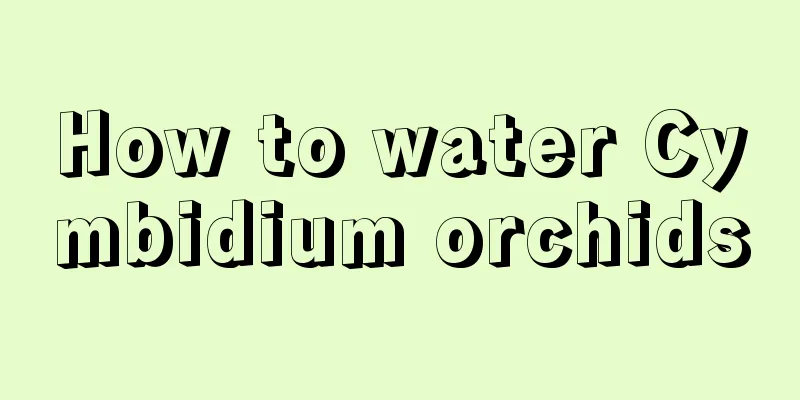How to water Cymbidium orchids

Water quality requirementsThe water used for Cymbidium orchids should be neutral or slightly acidic, pH 6-7; the content of calcium, magnesium and sodium is relatively low, so the conductivity is low; It is pollution-free, relatively pure, and contains a small amount of organic matter. If the water quality is not up to standard, Cymbidium orchids cannot be cultivated in the open field, otherwise it will be difficult to handle. If you must plant in an area with poor water quality, you must establish a water treatment system (usually this method is used in large-scale garden plantings), and the water used for irrigation must be treated before it can be used properly. The tap water at home contains high levels of chlorine and should not be used directly for irrigation. It should be allowed to sit for a period of time before use so that the water after the chlorine evaporates will not harm the plants. In addition, storing water in the pond for a period of time can make the water temperature closer to the air temperature, and the impact on plants after irrigation will be smaller. Watering methodWatering methods vary greatly depending on the facilities and cultivation. At present, large-scale production and cultivation all adopt the method of sprinkler irrigation or watering, which requires a relatively large one-time investment and saves labor. If there are many types of orchids being cultivated, and they are of different sizes, the substrate for the pots will be different. It is relatively troublesome to manage. In this case, manual watering is required and centralized watering is not possible. The frequency and amount of watering will vary depending on the potting medium used. Watering should be based on the permeability and dryness of the potting soil. The same type of orchid has different water requirements during the seedling stage and the adult stage. Young seedlings have poor tolerance to drought, so the potting medium should not be too dry and needs to be watered frequently to keep it moist. The water requirements of adult plants vary greatly at different growth stages. |
<<: Maintenance and management methods of lilies in summer
>>: How to water the cold orchid
Recommend
How many months is the best time to fertilize flowers?
1. Which months For most flowers that bloom from ...
What to do if lucky bamboo grows too tall? What lucky bamboo looks like and how to deal with it
What does it look like when lucky bamboo grows to...
Cultivation methods and precautions of mulberry tree
1. Soil The mulberry tree has a strong adaptabili...
Small loach breeding technology
Small loach is a seafood that many people like to...
How to water the peace tree in summer
1. Watering time When watering the peace lily in ...
Difference between Iceberry and Moonshadow
1. Difference of blades The leaves of iceberry ar...
How to grow daffodils well
1. Lighting Daffodils like sunny places. They are...
When is the best time to plant white peony?
Peony is one of the top ten famous flowers in Chi...
Can lucky bamboo survive if it is frozen?
1. Can it be saved? Lucky bamboo is not cold-resi...
Chrysanthemum cutting time and method
Chrysanthemum cutting time Chrysanthemums can be ...
How to remedy the problem of succulent plants losing leaves
1. Supplementary lighting If you keep it in a dar...
Cultivation methods and precautions of purple cicada flower
Cultivation methods and precautions of purple cic...
Is Stone Lotus poisonous?
1. Is it toxic? Don't worry, this plant is no...
How to fertilize the palace lantern Kalanchoe
1. The plant's fertilizer requirements Genera...
Reasons and solutions for the failure of Murraya paniculata to bloom
Osmanthus fragrans is loved by many flower lovers...









